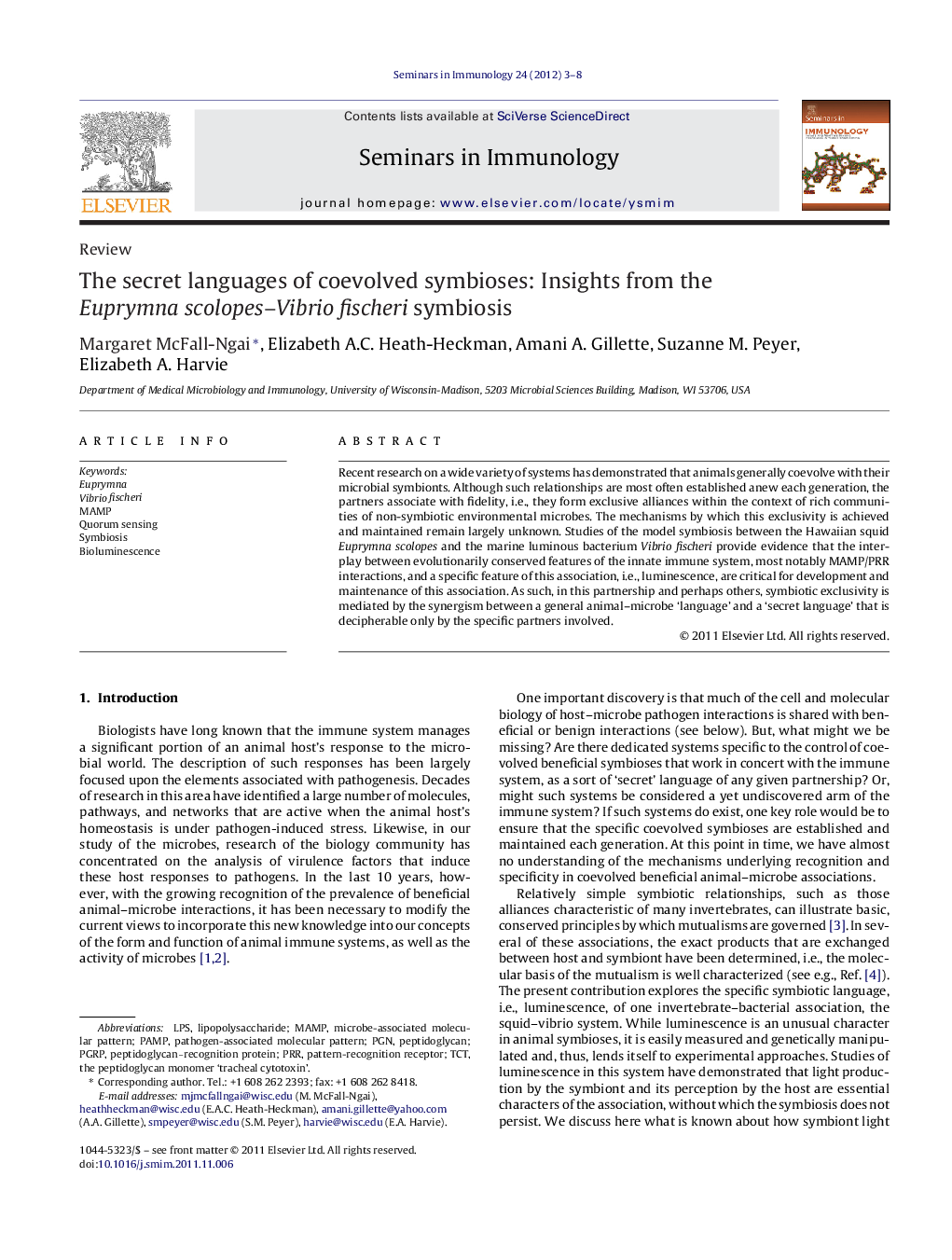| کد مقاله | کد نشریه | سال انتشار | مقاله انگلیسی | نسخه تمام متن |
|---|---|---|---|---|
| 3391583 | 1221062 | 2012 | 6 صفحه PDF | دانلود رایگان |

Recent research on a wide variety of systems has demonstrated that animals generally coevolve with their microbial symbionts. Although such relationships are most often established anew each generation, the partners associate with fidelity, i.e., they form exclusive alliances within the context of rich communities of non-symbiotic environmental microbes. The mechanisms by which this exclusivity is achieved and maintained remain largely unknown. Studies of the model symbiosis between the Hawaiian squid Euprymna scolopes and the marine luminous bacterium Vibrio fischeri provide evidence that the interplay between evolutionarily conserved features of the innate immune system, most notably MAMP/PRR interactions, and a specific feature of this association, i.e., luminescence, are critical for development and maintenance of this association. As such, in this partnership and perhaps others, symbiotic exclusivity is mediated by the synergism between a general animal–microbe ‘language’ and a ‘secret language’ that is decipherable only by the specific partners involved.
► Light acts in synergy with symbiont MAMPs to induce host phenotypes in the squid–vibrio system.
► Symbionts that do not produce light, i.e., ‘cheaters’, cannot persist in the light organ.
► Light organ-tissue perception of symbiont luminescence is a result of evolutionary tinkering.
► Taxon-specific symbiont features, e.g., luminescence, may mediate specificity in coevolved symbioses.
Journal: Seminars in Immunology - Volume 24, Issue 1, February 2012, Pages 3–8